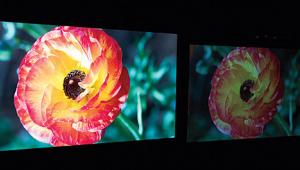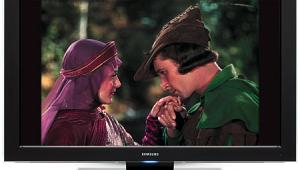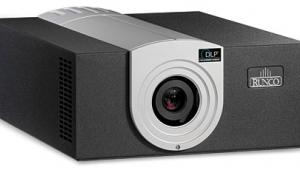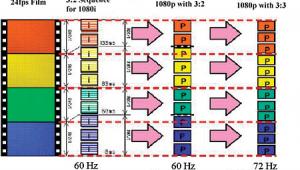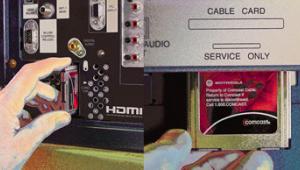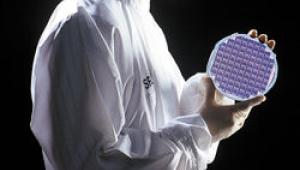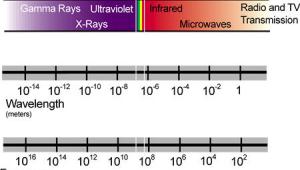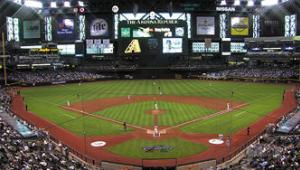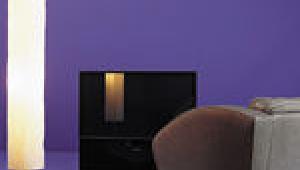HDR: The Other OLED Page 2
If you’re wondering what you’d use to create content with more range, color, and gradations, well…turns out that’s fairly easy. Modern digital cinema cameras are already capable of capturing far greater image quality than is possible with current TVs.
Getting that better content to your home, however, is a bit of a challenge, though not insurmountable. The next generation of video compression, HEVC, has the potential of carrying 10-bit color depth, and HDMI has a lot of bandwidth, thanks to the 2.0 specification. So some of the pieces are already here.
Getting a TV to produce a wider range of colors is also easy, or at least easier than hitting a mammoth contrast ratio. Almost every TV on the market today can produce a wider-than-needed color gamut that produces some wildly inaccurate colors when fed today’s Rec. 709 source material. But a TV that’s given content that takes advantage of this wider gamut would then be accurate—and far richer and more vibrant than normal HDTV.
How It Looks
All this theory is lovely, but how does HDR look? At this point, members of the consumer electronics press have actually seen HDR prototype displays from a number of companies, plus a rather extensive demo by Dolby that involved HDR-ready test content the company produced to feed their HDR prototype. The Dolby Vision prototype had 18,000 individually addressable RGB LED backlights and was placed side by side with a similar LCD TV that was set up to mimic a “regular” LCD. Anyone who saw the demo would readily agree there was significantly more punch and realism to the HDR image. And although the demo was in a darkened room, the image wasn’t blindingly bright (which, I’m sure, will put many of you at ease). The bright highlights and extra color in the Dolby content certainly looked impressive: rich, vibrant reds and greens, yellows and blues. In a clip showing a field of red and yellow flowers against a blue and gray sky, for example, the flowers popped almost three-dimensionally off the screen, while the same scene on the regular display looked washed out and dull by comparison. Of course, I think a better test would be the Dolby Vision proto next to an OLED. Maybe we’ll see that eventually.
Here and Now
While some parts of the technology are still in the hopeful/planning stages, a few versions of HDR are already here. Some companies, such as TCL and Sharp, showed Dolby Vision prototypes at CES 2014 (because, it’s important to mention, Dolby has no intention of making TVs, but only wants to license its technology or its HDR specification to display manufacturers). Other companies have their own versions of HDR, or are at least attempting to push the contrast ratio in other ways.
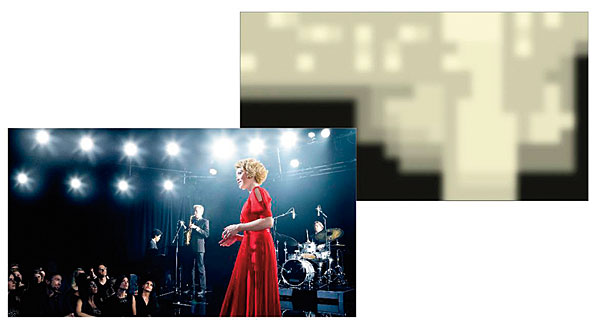

For example, Sony’s full-array local-dimming flagship HDTV, the X950B, has a feature dubbed X-tended Dynamic Range Pro. In a scene with both bright and dark elements, the TV takes the power that’s saved from driving the dim LED zones behind the dark areas of the screen and sends that extra power to the LEDs behind the bright areas. Imagine a spotlit singer on a darkened stage. The LEDs behind the singer are driven harder than there normally would be energy for, because the LEDs behind the dark areas of the screen are running at a lower power level. This kind of power manage- ment is a key benefit of local dimming, but it’s not always implemented like this. The edge-lit X900B has X-tended Dynamic Range (not Pro), which works similarly, but since there are fewer zones to work with, it’s not as efficient, nor does it demonstrate as big a benefit. Sony claims X-tended Dynamic Range Pro boosts the “brightness range” by 3X. Of course, the X-tended Dynamic Range approach is designed to work with today’s content, and as executed in current Sony sets, couldn’t take advantage of encoded Dolby Vision content should it ever become available.
Vizio, meanwhile, demonstrated Dolby Vision at the January 2014 CES and is talking about HDR for their upcoming Reference R-Series LED LCDs. If they hit their claimed target of a 233-ft-L (800-nit) backlight with 384 zones, this is definitely HDR territory.
Samsung also previewed their version of HDR at CES 2014, using one of their $85,000 85-inch LED LCDs. While HDR is not available in any products so far, I wouldn’t be surprised if we hear more at CES 2015.
Even without dedicated content, these displays will create a far richer, “deeper” image than a display with a lower contrast ratio. If the HDR label catches on, you can be sure that manufacturers will start overusing and abus- ing it, just like they have with refresh rates, contrast-ratio numbers, and so on. In other words, we’ll still have lots to test for our TV reviews, despite the labeling.
Front Projection? OLED?
Will we see HDR-style displays other than LED LCDs? Well…probably not. At least not with the current version of each TV technology. Plasma is effectively dead. On the front-
projection side, we have DLP, LCOS, and LCD. These create an image using one or three small panels (under an inch). There just isn’t a way to hyper-boost brightness in specific areas of the image, as you can do on a flat-panel LCD. Front projectors use a single lamp to create the light (as opposed to the many individual LEDs of a flat panel). Even the models that employ LEDs and lasers still use those light sources to illuminate the entire chip at the same time, so individual pixel brightness is controlled strictly by the chip. Could there be a way to do it? Absolutely, but we haven’t heard anything yet.
As far as OLED goes, the pixels in an OLED display vary in brightness depending on how much current you give them. So, in theory, you could give them even more current, and they’d be even brighter. In reality, it’s not quite that simple. Not least are the power concerns, but there’s also the old adage of “twice as bright, half as long.” OLEDs don’t age quite that simply, but their longevity is tied directly to their brightness. So an HDR OLED, again in theory, wouldn’t last as long as one not tuned for such high light output. Since the contrast ratio on OLED is pretty mind-blowing as is, I don’t think anyone’s going to be missing HDR for OLED anytime soon. And who knows, maybe there will be a breakthrough that allows OLEDs to be twice as bright for half the power.
Bottom Line
Ultra HD and its 4K image are receiving a staggering amount of press coverage, even though resolution is only one aspect of picture quality. Improving resolution is great, but truly stretching the limits of contrast ratio would go much further in creating that “window into a world” than simply increasing the pixel count.
High Dynamic Range, even in its most basic uber-local-dimming capacity, is a big step in the right direction. Pushing this even more is what Dolby wants to do with Vision. Some TV manufacturers seem interested, but whether it will lead to actual televisions remains to be seen. And as for reaching the ideal of Dolby’s 5,000-plus-ft-L prototype? Don’t hold your breath. No company will sell a TV with 18,000 LEDs. Besides, that’s a massive power draw, and even in the high end, manufacturers are conscious of their Energy Star ratings.
Still, to truly get the ultimate HDR display, we need HDR content, and that’s a lot harder sell. Making every step in the process HDR-compatible—from the cameras to the editing to the transmission to the TVs themselves—is a lot bigger of a hurdle.
So, will we see Dolby Vision content anytime soon? Probably not. But then, we barely have any vanilla 4K content yet, either. There are few companies with the know-how and stature in the tech industry to make HDR happen, so if anyone can do it, it’s Dolby.
We shall see.


